#Irish Celtic
Text
Irish Celtic fête son 12ème anniversaire aux Folies Bergère les 15, 16, 17 mars 2024

Irish Celtic revient en tournée française pour la fête de la Saint Patrick et sera aux Folies Bergère les 15, 16 et 17 mars 2024. Le meilleur spectacle de danses celtiques en activité sera très attendu à Paris pour son spectacle The Spirit of Ireland.
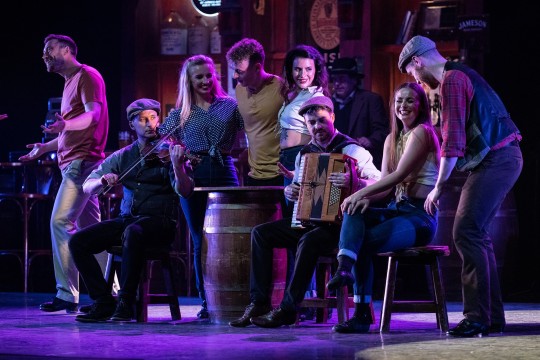
Irish Celtic, la légende est de retour pour nous embarquer avec son spectacle Spirit of Ireland. Irish Celtic propose un voyage touchant et émouvant, riche en histoires poétiques qui nous emmène au coeur de l'Irlande. Au programme : danses irlandaises, claquettes mélodieuses et musique celtique, dans un décor typique de pub irlandais. Le show s'annonce à Paris aux Folies Bergère le 15, 16 et 17 mars 2024 pour son douzième anniversaire. C’est un cru de 12 ans d’âge qui se bonifie avec le temps !
Irish Celtic vous fera bouger et danser sur des musiques incroyables dont seuls les Irlandais ont le secret. Venez partager durant 2 heures ce voyage au coeur de l’Irlande.
Toutes les infos sur le site des Folies Bergère
youtube
2 notes
·
View notes
Text
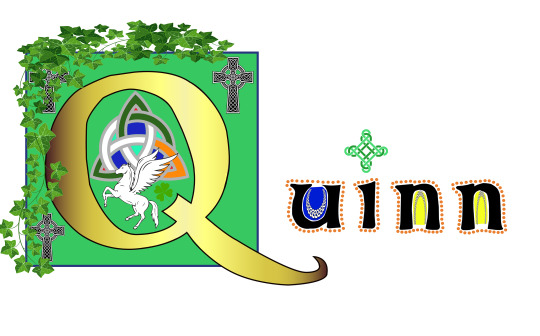

Kathryn Finter is a Canadian artist whose fifteenth-century materials and techniques of panel painting and manuscript illumination have inspired me. I learned a great deal while researching her illuminated letter art. I then decided to make my stepdad a Celtic Irish Quinn family name design.
#celtic#Celtic Irish#Irish#Celtic symbols#Irish symbols#triquetra#Celtic lettering#Irish lettering#digital illuminated lettering#illuminated lettering#illuminated letters#Irish Celtic#lettering#Quinn family name#Irish name#Kathryn Finter
5 notes
·
View notes
Text
youtube
Dropkick Murphys🎩🪄 Shipping Up To Boston
Happy St. Patrick's Day 🍀🍀🍀🍀🍀
#DropkickMurphys
#Youtube#Dropkick murphys#happy st patrick's day#shamrocks and shenanigans#music#spotify#im shipping up to Boston#Irish Celtic#Anthems
0 notes
Text

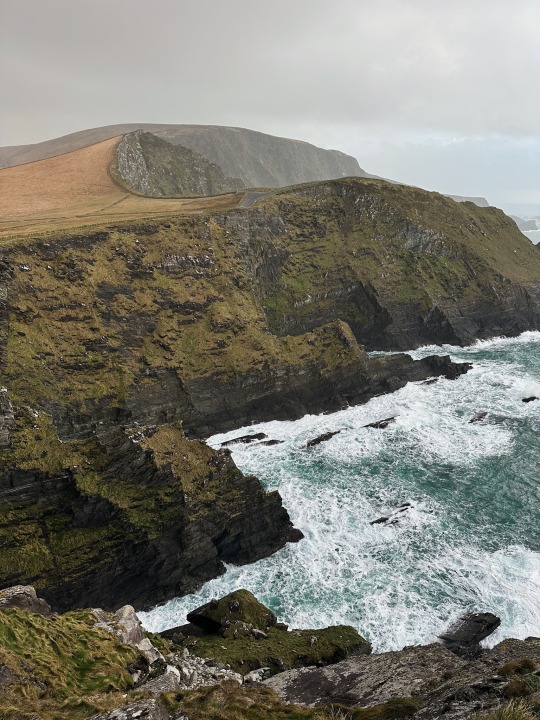
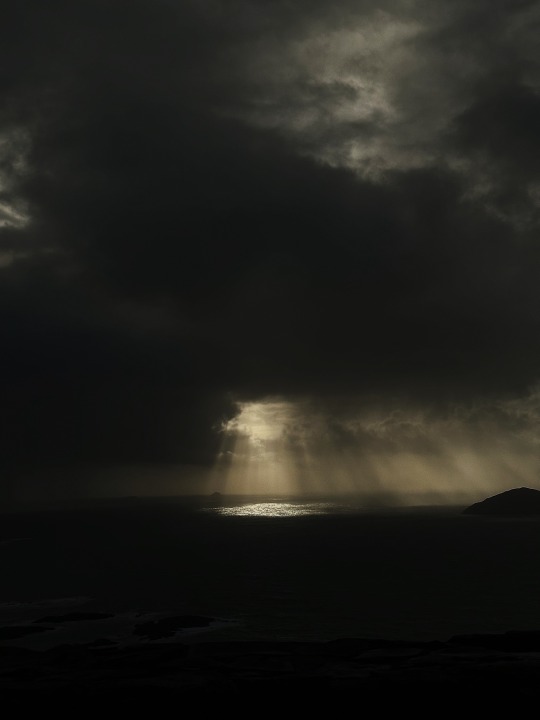
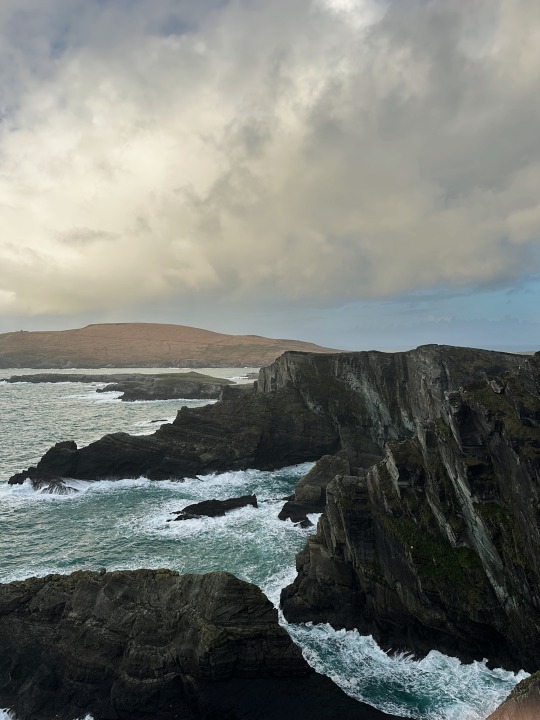



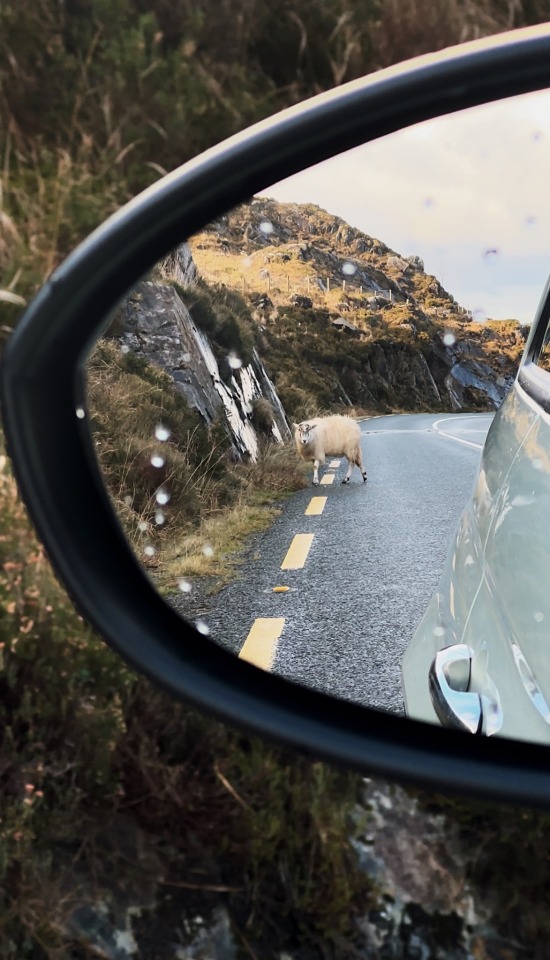


The startling beauty of Kerry, Ireland
#Kerry#Ireland#Irish#road trip#travelblr#vsco#vscocam#iphonography#coffee#Celtic#cozy#traveller#wanderlust#wander over yonder#green aesthetic#architektura#architecture#cliffs#hiking aesthetic
881 notes
·
View notes
Text
Sometimes I approach my shrines and just sort of stand there. Like, I don't pray, make offerings, or anything. I'll just stand there and look at it. Or sit next to it.
For a while, this made me feel strange and a little guilty, even. But now I look to how I do similarly with my parents. I'll just go and sit quietly with them, or go lean on them. Just take comfort in their presence.
The Gods ARE our divine parents, after all.
#hellenic deities#hellenic polytheism#pagan#hellenismos#greek polytheism#hellenic gods#altar#irish paganism#polytheism#irish mythology#celtic paganism#celtic polytheism
467 notes
·
View notes
Text
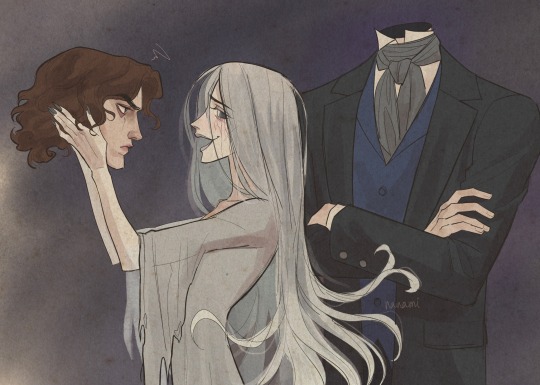
samhain 🧡 a banshee & a dullahan
#oíche samhna#happy halloween#irish folklore#samhain#éire#banshee#dullahan#halloween#irish fae#artists on tumblr#my art#original art#irish#irish mythology#ireland#mythology#celtic#ealaín#celtic mythology#celtic art#irish art#art#drawing#illustration#sketch#gaelic#gaeilge#autumn
964 notes
·
View notes
Text
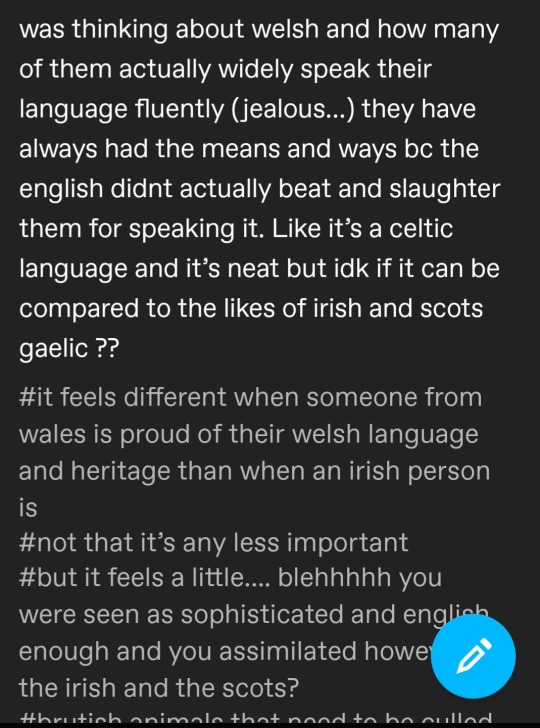
I'd like to preface this with that this is a screenshot of a post I saw a few days ago in the #welsh tag and that the OP has since deleted this post, but the sentiment is something I'd like to address since I see a lot of parallels with this kind of thinking in other contexts, such as in LGBTQIA+ rights conversations.
So, the most obvious elephant in the room is the idea that Welsh is super widely spoken in Wales now and that it isn't in as much danger as other Celtic languages. This idea is wishful thinking at best and erases the very real danger that Welsh is in and that it could be lost just as easily as Irish or Scottish Gaelic. Cornish (which is related to Welsh) actually did die out and has had to be revived. To make a metaphor out of this, we classify languages on a scale of non-threatened to endangered in a similar way to how we classify species.
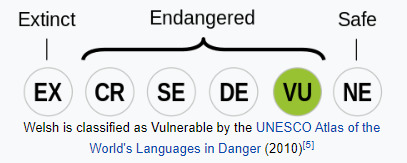

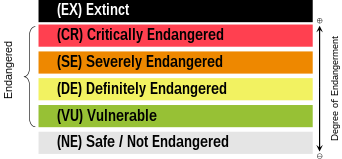
Here are the statuses of Welsh and Irish as of 2010 (above) and the statuses of Lions and Tigers (below).

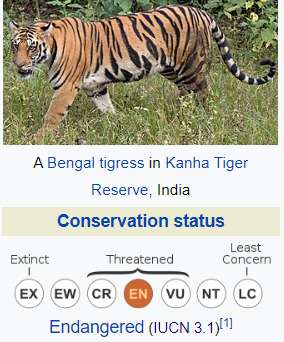
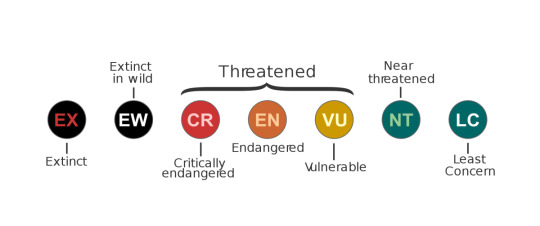
On paper tigers are more 'in danger' than lions. But that does not mean that lions are suddenly not in danger at all. The little bracket above CR, EN and VU labels all of these classifications as threatened. It isn't (and definitely shouldn't) be a competition of 'who is most in danger' because you do not want the thing you care about (whether it be a species or a language) to be in danger.

To come back to the original screenshot "they* [Welsh speakers] have always had the means and the ways because the English didn't beat or slaughter them for speaking it"- on the most basic of levels, this is just incorrect. The Welsh Not was a wooden token hung around schoolchildren's necks if they spoke Welsh in school. If someone else spoke Welsh the Not would be hung around their neck. At the end of the school day, whoever was wearing the Not would be beaten and caned by their teachers. I needn't go into much detail but there have been concerted efforts to beat Welsh out of schoolchildren. With the lions vs tigers metaphor, making the claim Welsh speakers have never been beaten for speaking Welsh because they always had the means and ways, while Irish speakers were beaten and never had the means or ways is like claiming poachers have never shot lions, only tigers. Bottom line is, lions and tigers are both victim to poaching and both species have suffered as a result. Similarly, Welsh and Irish have both suffered language loss and both need conservation efforts in order to survive.
(*sidenote- the consistent use of 'them' and 'they' in the original post is definitely indicative of a 'us vs them' sentiment which is a deeply unhelpful attitude to have when it comes to endangered languages and the Celtic languages in particular)
I see parallels with LGBTQIA+ rights in this situation. When equal marriage came in for gay and lesbian couples in the UK in 2014, many allies began to act like gay rights had now been achieved and that gay issues had been done, they're solved. Except, they really weren't (and aren't). Progress has been made in Wales and undeniably Welsh is doing the best out of the living Celtic languages. But that doesn't mean Welsh has been saved or that full equality for Welsh speakers has been achieved. It very much hasn't. The sentiment of the post in the screenshot is not conducive to helping Irish or Scottish Gaelic. Putting down Welsh speakers and erasing Welsh-language history will not save Irish or Scottish Gaelic. Pretending Welsh has had it easy in some kind of lap of luxury is a deeply harmful and bogus claim.
I'll address the tags under the cut as this post is getting long.
To address the tags, personal feelings ≠ an accurate reading of a situation. Nor is it praxis, for that matter. Why is pride in Welsh different/less good than pride in Irish? Is it the assumed proximity to England? If so, that's a terrible claim to make. Not only that, but Scotland is also next to England- does that make pride in Scottish Gaelic the same as pride in Welsh according to this metric? It's a ludicrous thing to say and deeply insensitive to the needs of Scottish Gaelic and Welsh speakers, who cannot help any current or former proximity to England.
Additionally, proximity to England ≠ worse. I know it's a popular internet joke to hate on England because of English attempts to eradicate the Celtic languages, but when the joke becomes praxis, it does not help. England ≠ a place devoid of Celtic languages either. Many English counties near the Welsh border actually have communities of Welsh speakers, such as Oswestry (Croesoswallt) in Shropshire. Cornwall is also home to many speakers of revived Cornish. It does a disservice to Celtic speakers in England to insinuate that proximity to England taints or corrupts them somehow. This is how ethnonationalism starts and we ain't about that.
And "#it feels a little.... blehhhhh you were seen as sophisticated and english enough and you assimilated however the Irish and the Scots? #brutish animals that need to be culled". So, this is arguably one of the worst things to say about a Celtic language- or any threatened language in general. First of all, the 'you were seen as' - 'you' is very telling. The switch from 'them', 'they' to 'you' indicates that this sentiment is aimed at Welsh speakers directly. This was likely a subconscious thing that OP wasn't thinking about when they wrote this. But it does indicate unhealthy feelings of jealousy and bitterness unfairly directed at Welsh speakers, who are also struggling. This righteous anger at the decline of Irish and Scottish Gaelic would be better directed at efforts to help promote those languages- some useful things to get involved with are LearnGaelic, similar to DysguCymraeg but for Scottish Gaelic or supporting channels such as Irish channel TG4 by watching their programmes.
The idea that Welsh speakers were or are 'sophisticated and english enough' is insulting and carries with it a lot of baggage of how any of these assumptions came about. Welsh speakers were definitely not seen as sophisticated. Where Welsh was 'tolerated', it was treated as a curiosity, a relic of a bygone age. Classic museification which all Celtic languages and cultures suffer from as well. Welsh was not tolerated in any legal sense since 1535- with English becoming the only valid administrative language and the language of Welsh courts after England annexed Wales into its Kingdom. Monolingual Welsh speakers suddenly had no access to any legal representation, unless they learned English. This is no voluntary assimilation- it is an act of survival for many speakers of minoritised languages to 'assimilate' into the dominant culture, or else risk losing access to legal security and other kinds of infrastructure. You need only ask any non-native English speaker living in an Anglophone country what that process is like. Welsh people did not see English incursion as an opportunity to become 'sophisticated and english enough', they had to assimilate in order to survive.
The "Irish and the Scots? #brutish animals that need to be culled" is also painfully misrepresenting a very complex social and political process that unfolded over the span of hundreds of years. The phrasing itself of 'brutish animals that need to be culled' speaks to righteous anger at the damage done to these languages and cultures, but it reinforces negative stereotypes about the Irish and Scots themselves. It also is more complicated than a simple English hatred of anything non-Anglo, since the English conception of particularly the Irish changed a lot over the centuries. It was (and still is) rarely consistent with itself. See: the enemy is both strong and weak. The very earliest Celticists were by and large, Anglos or French.
Ernest Renan (1823-1892) for example, was an early French Celticist who published La Poésie des races celtiques (Poetry of the Celtic Races- English translation) in which he says:
"... we must search for the explanation of the chief features of the Celtic character. It has all the failings, and all the good qualities, of the solitary man; at once proud and timid, strong in feeling and feeble in action, at home free and unreserved, to the outside world awkward and embarrassed. It distrusts the foreigner, because it sees in him a being more refined than itself, who abuses its simplicity. Indifferent to the admiration of others, it asks only one thing, that it should be left to itself. It is before all else a domestic race, fitted for family life and fireside joys. In no other race has the bond of blood been stronger, or has it created more duties, or attached man to his fellow with so much breadth and depth"
Yeah. This guy (unsurprisingly) was a white supremacist. Note that this sentiment is being applied to all people considered Celtic by Renan- Irish, Welsh, Breton, Scottish, Cornish, Manx etc. None unscathed by the celtophobia of the day. In this period, Celticity was romanticised (yet disparaged at the same time). It is less 'brutish animals' and more 'archaic, time-frozen peoples' in this period. Of course, 'brutish animals' attitudes towards Celticity did still exist, but it is disingenuous to act as if it was this attitude alone which drove English celtophobia. Like many things, it is always more complicated and never clear cut as it might seem.
I'll bring this to a close shortly, but returning to OP's suggestion that the Welsh assimilated and the Scots and Irish did not, is also incorrect in that some Scots did have to assimilate to survive as well. The Statutes of Iona (1609) required Scottish Gaelic speaking Highland chiefs to send their sons away to be educated in Scots and/or English in Protestant schools. Many did as the statutes required, which led to further language loss in the Highlands of Scottish Gaelic. These are acts of survival- and not ones always taken willingly.
This has been a long post but it's one which I felt I wanted to address. There's no need for infighting between speakers of Celtic languages over who has it worse. There isn't any answer to that question, nor is it a good use of time or energy. All in all, the Celtic languages have suffered greatly over the years and its only just now that some of them are turning a corner. If you care about these languages, put your energy into something good. Only through active work will these languages be saved for generations to come.
#long post#lukes originals#cymraeg#gaelige#gaidhlig#Irish#Welsh#Scottish Gaelic#politik#not dictionary related#Celticist#Celtic Studies#This took a lot of energy to write so if you found this post useful please consider reblogging
1K notes
·
View notes
Text
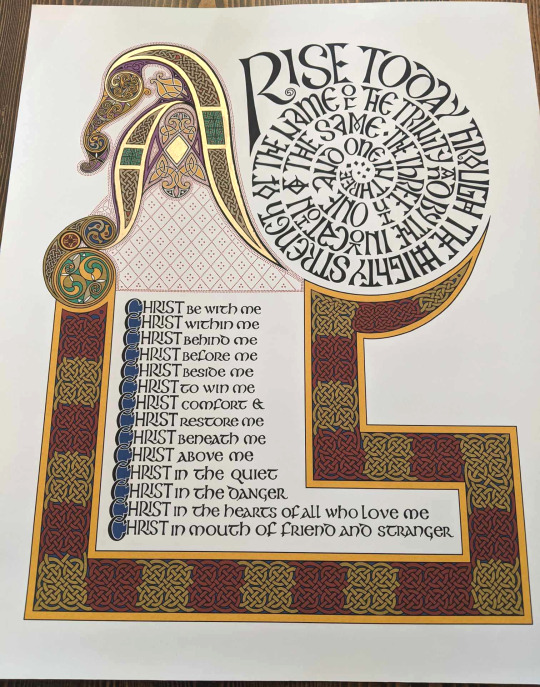
Finished up the Lorica of St. Patrick, a re-working of an earlier design I did. 16" x 20"
637 notes
·
View notes
Text

Another Lugh-inspired drawing. He’s easy to go for inspiration, especially right now when things are feeling their craziest.
557 notes
·
View notes
Text

Incipit of the Gospel of Luke (Quoniam quidem multi...), fol. 188r from the Book of Kells, created in an Irish or Scottish monastery ca. 800. Now in the Library of Trinity College, Dublin.
#art#art history#Book of Kells#Irish art#Celtic art#illuminated manuscript#Gospel of Luke#incipit#medieval art#9th century art#Trinity College Dublin
304 notes
·
View notes
Text
Irish Celtic arrive du 16 au 19/03/2023 au Dôme de Paris

Retour à Paris pour fêter la Saint Patrick du show le plus emblématique de la danse et de la musique celtique ! Irish Celtic arrive à Paris du 16/03 au 19/03 pour dévoiler son nouveau spectacle Le Chemin des Légendes, puis partira ensuite en tournée partout en France.

Le Chemin des Légendes, le troisième et dernier opus de la saga Irish Celtic promet « un voyage initiatique où se mêlent valeurs, légendes et traditions », au son de la musique traditionnelle irlandaise.
Un spectacle tout en danse, chant et musique irlandais live. Irish Celtic, le chemin des légendes sera de passage sur la scène parisienne, cela se passe du 16 au 19 mars 2023 au Palais des Sports, Dôme de Paris.
On retrouve les emblématiques Paddy Flynn et Diarmuid. Père et fils tiennent un pub familial. On peut y entendre des musiques traditionnelles mais aussi des rires et des discussions de clients. Paddy propose à son fils un voyage initiatique. Vous aurez l'impression de voyager au coeur de l'Irlande. C'est l'occasion de découvrir des airs traditionnels. La danse et la musique celtique sont en osmose.

"Irish Celtic- le chemin des Légendes », ce sera du 16 au 19 mars au Dôme de Paris- Palais des Sports.
Billetterie et informations
La bande-annonce de la tournée 2023 :
youtube
#irish celtic#danse#dome de paris#indigo prod#spectacle#famille#paris#billets#culture#musique celtique#saint patrick
0 notes
Text
Important Facts about Samhain from an Irish Celtic Reconstructionist
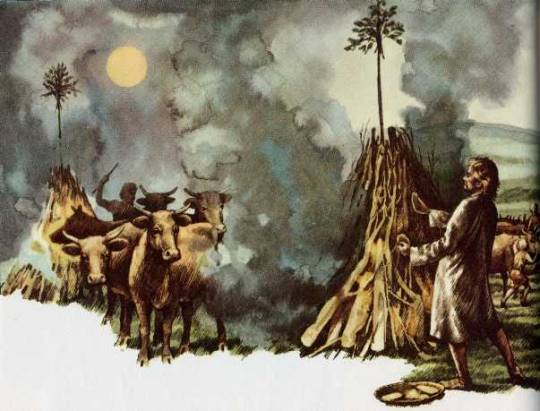
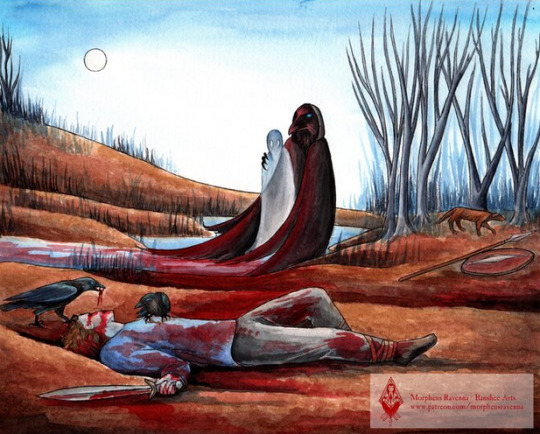

Pronunciation
SOW-in or SOW-een ~NOT~ Sam-han, Sam-win etc.
Dates
Most reconstructionists celebrate Samhain on Oct 31-Nov 1, however some may choose to celebrate on Gregorian Nov 13-14 as this would match the Julian dates of Oct 31-Nov 1. Some also believe that it was a three day festival spanning Oct 31- Nov 2 on which Nov 2 is specifically devoted to ancestral veneration, but there is no specific evidence of this, only possible extrapolation from more modern practices.
Following the Celtic method of days beginning at sunset, regardless of the specific dates you choose to celebrate on your festivities should begin at sunset and end at sunset.
Importance in the Mythos
Ná Morrighan has a strong connection to this time of year thanks to the story of Cath Dédenach Maige Tuired (The Last Battle of Mag Tuired) in which she is found depicted as the ‘Washing Woman’ (sometimes washing herself in the river and other times washing the bloodied armor of the soldiers that would die that day), on the eve of the battle which is also Samhain. The Dagda approaches her and couples with her (creating the ‘Bed of the Couples’ along the bank of river and granting Dagda her blessing in the battle to come). This encounter seems to over emphasize the liminality of the encounter by taking place during the changing of the year and with the couple each standing with ‘one foot on either bank’ of the river.
She and her sisters (Badb and Macha) then use various forms of magic to rain destruction on their enemies (in the form of fire and blood). After the day is won Morrighan speaks a prophecy that describes what is taken by some to be the end of days and others to be the events which will later lead to the Ulster Cycle.
Beneath the peaceful heavens lies the land.
It rests beneath the bowl of the bright sky.
The land lies, itself a dish, a cup of honeyed strength, there, for the taking, offering strength to each
There it lies, the splendour of the land.
The land is like a mead worth the brewing, worth the drinking.
It stores for us the gifts of summer even in winter.
It protects and armours us, a spear upon a shield
Here we can make for ourselves strong places, the fist holding the shield
Here we can build safe places, our spear-bristling enclosures.
This is where we will turn the earth. This is where we will stay.
And here will our children live to the third of three generations
Here there will be a forest point of field fences
The horn counting of many cows
And the encircling of many fields
There will be sheltering trees
So fodderful of beech mast that the trees themselves will be weary with the weight.
In this land will come abundance bringing:
Wealth for our children
Every boy a warrior,
Every watch dog, warrior-fierce
The wood of every tree, spear-worthy
The fire from every stone a molten spear-stream
Every stone a firm foundation
Every field full of cows
Every cow calf-fertile
Our land shall be rich with banks in birdsong
Grey deer before Spring
And fruitful Autumns
The plain shall be thronged from the hills to the shore.
Full and fertile.
And as time runs its sharp and shadowy journey, this shall be true.
This shall be the story of the land and its people
We shall have peace beneath the heavens.
Forever
(based on the translation by Isolde Carmody)
It is also mentioned in Echtra Cormaic that on this festival every seven years the high king would host a feast, it was at this time new laws could be enacted. (but it seems that individual Tuathas or possibly kings of the individual providence may have done this for their territories at Lughnasadh).
It seems to be a time considered especially susceptible to (or of) great change as it is the time which the Tuatha de Danann win victory over the Formorians and take control of Ireland, the invasion of Ulster takes place at this time in Táin bo Cúailnge, in Aislinge Óengusa Óengus and his bride-to-be are changed from bird to human and eventually he claims kingship of Brú na Bóinne at this time of year.
Celebration Traditions
Samhain is the beginning of the “dark half” of the year and is widely regarded as the Insular Celtic equivalent of the New Year. The “dark half” of the year was a time for story telling, in fact in this half of the year after dark is considered the only acceptable time to tell stories from the mythological and Ulster cycle (the Fenian cycle being assumed to be no older than the 12th century based on linguistic dating). Traditionally anything that had not been harvested or gathered by the time of this festival was to be left, as it now belonged to the Fae (in some areas specifically the Púca).
This was also an important time for warding off ill luck in the coming year. Large bonfires would be built and as the cattle were driven back into the community from the pastures they would be walked between these bonfires as a method of purification (the reverse custom of Bealtaine where the livestock were walked between the fires on their way out to the summer pastures). Assumed ritualistic slaughter of some of the herd would follow (though this perhaps had the more practical purpose of thinning the herd before the winter and creating enough food for the feasting). In some areas the ashes from these fires would be worn, thrown or spread as a further way to ward off evil.
Homes would be ritualistically protected from the Aos Sí (Fae or ‘Spirits’) through methods such as offerings of food (generally leaving some of the feasting outside for them), carving turnips with scary faces to warn them off (we now tend to do this with gourds), and smoke cleansing the home (in Scottish saining) traditionally with juniper, but perhaps rowan or birch might be an acceptable alternative. It is likely these would be part of the components used in Samhain bonfires as well, for the same reason.
Lastly based on later traditions as well as links in the mythology this is a time where divination practices or those with the ‘second sight’ were regarded to be especially potent.
Art Credit @morpheus-ravenna
#samhain#irish#irish mythology#irish polytheism#irish paganism#celtic reconstructionism#celtic paganism#celtic polytheism#na morrigna#the morrígan#the dagda#fire festival#blackcrowing#Irish reconstructionist
446 notes
·
View notes
Text
did you hear there’s a new short film that is GAY?? LESBIAN, even???
AND it’s filmed in a minority language?? a CELTIC language, one might say??
AND that it’s available for FREE, with SUBTITLES in both irish AND english??

“FAN” (2024) dir. by cúnla ní bhraonáin morris
watch here 🫶
#fan#fan film#short film#irish film#irish short film#gay short film#lesbian#gay#irish#gaeilge#irish language#langblr#minority language#endangered language#gaelic#irish art#irish gaelic#stay#gearrscannán#gael#celtic#irish langblr#bloc tg4#tg4#romcom#comedy#lighthearted#romance#gay romance#lesbian romance
158 notes
·
View notes
Text

I’m not over it
#engagement#Ireland#proposal#ring#Celtic#Irish#vsco#vscocam#iphonography#travelblr#wanderlust#estate#exteriors#hand#engagement ring
238 notes
·
View notes
Text

#Celtic Folk Music#Celtic New Age#Contemporary Folk#Christmas Music#Chamber Folk#Irish Folk Music#1980s#1990s#Canada#poll#Spotify
148 notes
·
View notes
Text

Grianstad shona daoibh!
In Ireland, the Winter Solstice is often associated with the Newgrange passage tomb in County Meath. Each year, as the sun rises on the Solstice, it aligns perfectly with tomb to illuminate the passage within.
Lots of historical, scientific and even crazy (I’m looking at you Ancient Aliens) theories exist as to why this occurs, but there is also some stories within our mythology associated with the event, including the Dagda’s affair with the Goddess Boann.
The Dagda was thought to be an Irish god of fertility and strength. A wife of one of his aides, Boann, a goddess of the River Boyne, was particularly entranced, and the couple soon began a clandestine affair. Affairs don’t stay secret when a god of fertility is involved, and Boann quickly fell pregnant around springtime.
Boann resided at Newgrange, and when her husband left for a hunting trip, the Dagda cast a spell to make the sun standstill for nine months and pause time. Boann carried her baby to term and eventually gave birth to Aengus, a god of youth and love. Despite it now being Winter, on Elcmar’s return he felt as if only a day had passed and the affair went unnoticed. That is until one day, when an adult Aengus would eventually arrive to duel Elcmar for Newgrange, which he deemed his birthright.
#irish mythology#artists on tumblr#irish folklore#newgrange#winter solstice#aengus#the Dagda#Boann#celtic polytheism#amylouioc art#my art#celtic mythology#fantasy illustration
235 notes
·
View notes